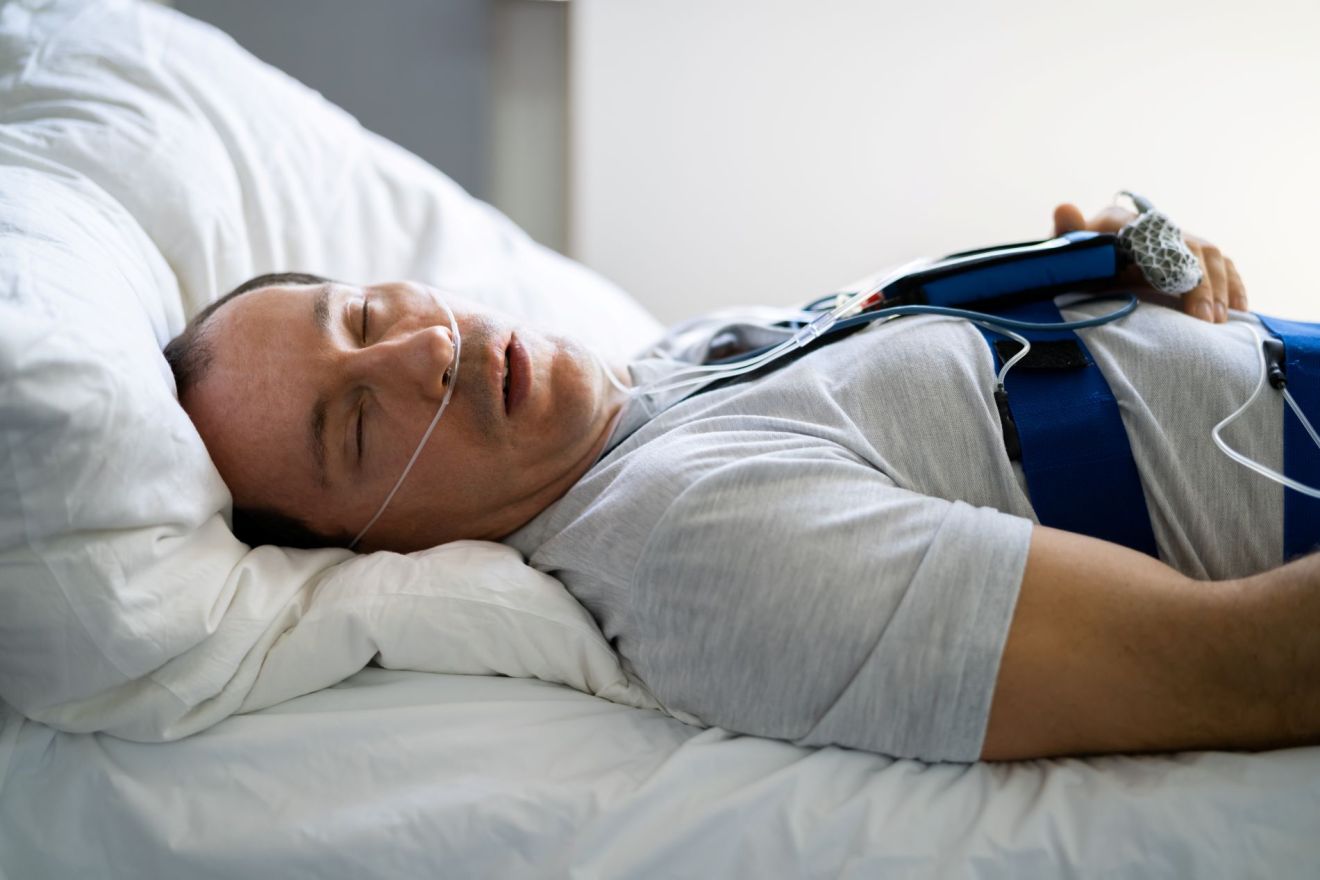
Sleep Studies
A sleep study is a non-invasive, overnight exam that allows doctors to monitor you while you sleep to see what’s happening in your brain and body.


They help doctors diagnose sleep disorders such as sleep apnea; periodic limb movement disorder; narcolepsy; restless legs syndrome; and insomnia; as well as nighttime behaviors like sleepwalking and REM sleep behavior disorder.
Often these disorders cannot be identified with a normal office visit so your doctor needs to gather more conclusive evidence while you’re asleep. The data from your sleep study will be scored by a technologist, and later evaluated by your doctor.

Types of Sleep Studies
There are four basic types of sleep studies. Three of them are conducted in a sleep center, while the fourth can be done at the patient's home.
Polysomnogram
A polysomnogram, or PSG, is an overnight test that records several body functions during sleep including brain activity, heart rate, blood pressure, oxygen levels, eye movement, breathing and body muscle movements.
Multiple Sleep Latency Test
A Multiple Sleep Latency Test, or MSLT, is a daytime study that measures how sleepy you get during the day. It usually follows a PSG study and records whether you fall asleep during the test, and if so which stages of sleep you enter. This test is key to diagnosing Narcolepsy that causes of daytime tiredness.
Maintenance of Wakefulness Test
The Maintenance of Wakefulness Test, or MWT, study measures whether you doze or fall asleep during a time when you normally should be alert and awake. This test is often prescribed to diagnose shift worker disorder or jobs that involve public transportation.
Home Sleep Test
Taken at the patient's residence, the home sleep test utilizes a small portable device to collect diagnostic information to be interpreted once it has been returned. While the HST is an option for patients who cannot attend an in-lab study, there is a possibility enough information might not be collected and an in-lab study will be required.
CPAP Titration
Following your sleep study, the doctor may prescribe a second test called a CPAP titration. The CPAP titration study is essentially the same as the polysomnogram with the addition of the CPAP therapy.
A titration is performed to determine the optimal CPAP pressure setting required to resolve apnea episodes. During the titration, the patient wears a mask and CPAP pressures are dialed up and down during sleep to find a single best pressure delivery and setting to control apnea events.
Why Can't I Just Do a Home Sleep Test?
While Home Sleep Tests (HSTs) are a viable option for some patients, they don't always collect enough information, which means you will still have to come in for an in-lab study.
If your provider or Focus Sleep Centers determines an HST wouldn't collect the required information to correctly diagnose your issue, you will likely be referred for an in-lab study so you'll only have to do it once.
Common Sleep Study Questions
We've listed some of the more common questions here. If your question isn't answered, check out our Education Center for more resources.
Yes, sleep studies are non-invasive and very safe. Our labs are AASM-accredited and staffed by board-certified professionals who follow strict safety and hygiene protocols.
Most insurance plans, including Medicare, cover sleep studies if they are medically necessary. Our team will verify your benefits and get any required authorizations before scheduling.
You’ll sleep in a private, comfortable room at one of our accredited locations. Technicians will attach sensors to monitor your sleep, but the setup is non-invasive and designed to minimize discomfort. You'll be observed overnight by trained staff.
A home sleep test involves using a portable device that you wear while sleeping in your own bed. It's simple to use and records data on your breathing and oxygen levels. Instructions and support are provided to ensure accurate results.